1 - 25 of 13
| Author | Title | Description | Subject | Date | ||
|---|---|---|---|---|---|---|
| 1 |
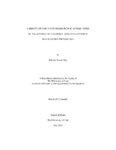 |
May, Brittany Nixon | A survey of early childhood public school music in the district of columbia: assessing content and teacher preparation | The purpose of this study was to examine early childhood music teaching processes and practices of public school elementary general music teachers in the District of Columbia Public Schools (DCPS). The goals were to (1) use the Opportunity-to-Learn Standards for Music Instruction: Grades PreK-12 and... | Early childhood music education; Elementary general music education; Music education; Teacher preparation | 2015-05 |
| 2 |
 |
Worthen, Cherilyn Renee | The choir school of the Mormon Tabernacle Choir: history and curriculum 1999-2013 | The distinctiveness of the Mormon Tabernacle Choir (MTC) as a unique American choral ensemble is revealed in a persistent paradox that both underscores its history and sets it apart from other choral organizations. By virtue of its widely distributed television broadcasts, recording projects, and to... | Choir; Choir school; Choir training; Choral music; Choral pedagogy; Mormon tabernacle choir | 2014-12 |
| 3 |
 |
Thomas, Brian David | Diffused paradigms: musical depictions of biodegradation, refraction of sound, and memory deterioration in Sorensen's Sterbende Garten | In Sterbende Gärten (Decaying or Dying Gardens) Bent Sørensen employs specific compositional methods in order to depict biodegradation of plants, refraction of sound, and memory deterioration in each of the three movements of the work, respectively. He obscures the formal design of the first movem... | Bent; Gärten; Music; Sørensen; Spectral; Sterbende | 2011-05 |
| 4 |
 |
Kirschner, Aaron J. | Divisions without hierarchy: four-dimensional modeling of submeter and its use in empirical analysis of the musics of the new complexity | Central to virtually all scholarship of meter is a notion of beat hierarchy. However, when beat units and/or tempi are in constant flux, defining a hierarchy becomes nearly impossible. Such impulse structuresâ€"common to music of the New Complexityâ€"resist traditional scholarship of meter/sub... | Empirical Analysis; Ferneyhough; Meter; New Complexity; Rhythm; Submeter; Music | 2017 |
| 5 |
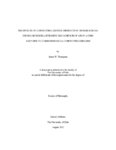 |
Thompson, James W. | The effects of conducting-gesture instruction on high school string orchestra students' recognition of and playing response to common musical conducting emblems | The purpose of this study was to investigate the effects of conducting-gesture instruction on high school string orchestra students' recognition of and playing response to common musical conducting emblems. Musical conducting emblems were defined as nonverbal movements or gestures used by conductors... | Conducting-gestures; Conducting instruction; High school music; Nonverbal communication; Orchestra students; Performance response; Music; Music education | 2012-08 |
| 6 |
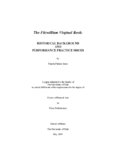 |
Jones, Pamela Palmer | The Fitzwilliam virginal book: historical background and performance practice issues | During the reign of Queen Elizabeth I in England in the late sixteenth-early seventeenth centuries, very repressive anti-Catholic laws were enacted by Parliament. Catholicism then became the illegal underground religion of the gentry, sustained primarily by a web of intricate family alliances. The a... | Fitzwilliam virginal book; Harpsichord; English; Baroque | 2009-05 |
| 7 |
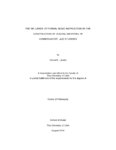 |
Larsen, Vance E. | The influence of formal music instruction on the construction of musical identities of conservatory jazz students | Scholarship in musical identity has been tied to psychological and sociological theories of identity construction. Recent scholarship has used social identity theory as a means to explore the relationship of music to identity. Scholars have advocated for phenomenological inquiry in order to gain an ... | Identity; Jazz | 2014-08 |
| 8 |
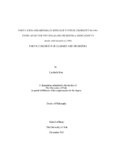 |
Kise, Lyudmila | Part I: Sofia Gubaidulina's approach to pitch centricity in Two Paths: music for two violas and orchestra a dedication to Mary and Martha (1999) Part II: concerto for clarinet and orchestra | This theoretical study is devoted to the analysis of pitch centricity in Sofia Gubaidulina's post-tonal composition Two Paths: Music for Two Violas and Orchestra (1999). A detailed examination of Gubaidulina's approach to the exploration of axes of symmetry and sonic organization as a whole, inclu... | Concerto; Pitch centricity; Sofia Gubaidulina; Two paths | 2011-12 |
| 9 |
 |
Iachimciuc, Igor | Part I: Sound color in the music of Gyorgy Kurtag, Part II: Leopard's path, thirteen visions for chamber ensemble | The dissertation is in two parts, a theoretical study and a musical composition. In Part I the music of György Kurtág is analyzed from the point of view of sound color. A brief description of what is understood by the term sound color, and various ways of achieving specific coloristic effects, are... | Gyorgy Kurtag; Music; Sonorism; Sound color; Timbre; Tone color | 2010 |
| 10 |
 |
Part I: Traditional elements and spectral content in Color by Marc-André Dalbavie Part II: Siberia for wind ensemble and electronics | The goal of this dissertation is to explore some recent tendencies in the evolution of spectral music. Color by Marc-André Dalbavie is a prominent example of the implementation of traditional elements within a spectral context. The work selected for analysis encompasses an orchestral piece that cov... | Dalbavie, Marc-André, 1961- Color | 2013-05 | |
| 11 |
 |
Marie, George Thomas | Tiny infinity for orchestra and Stefan Wolpe's Zone technique and Ralph Shapey's late music: an intensive analysis of String Quartet no.9 | This dissertation consists of two components, a composition for orchestra entitled Tiny Infinity and a theoretical study entitled "Stefan Wolpe's Zone Technique and Ralph Shapey's Late Music: An Analysis of the Introduction Movement of Shapey's String Quartet No. 9 ." The article presents a comparat... | Music composition; Music theory and analysis; Ralph Shapey; Stefan Wolpe | 2014-08 |
| 12 |
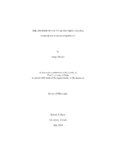 |
Bernal, Sergio | The triumph of joy over tragedy: pitch A in Mahler's Fifth Symphony | One of the extraordinary innovations found in Mahler's symphonies is the use of progressive tonality as a vehicle to express emotional transformation. Two of Mahler's four "Wunderhorn" symphonies, the Second and Fourth, both progress away from the original tonic and end in a mediant or submediant ke... | Analysis; Fifth; Harmonic; Mahler; Melodic; Symphony | 2013-05 |
| 13 |
 |
Wilks, Nathan A. | Verse chorus verse: an analysis of repetition in popular music | Popular music is often criticized by academics for being too repetitive. However, repetition is the mechanism by which music makes sense of itself. It is a conduit for meaning â€" separating music from noise, poetry from ambient chatter. By showing that in most verse-chorus songs, the amount of v... | Analysis; Music; Music psychology; Music repetition; Popular music; Repetition | 2017 |
1 - 25 of 13
